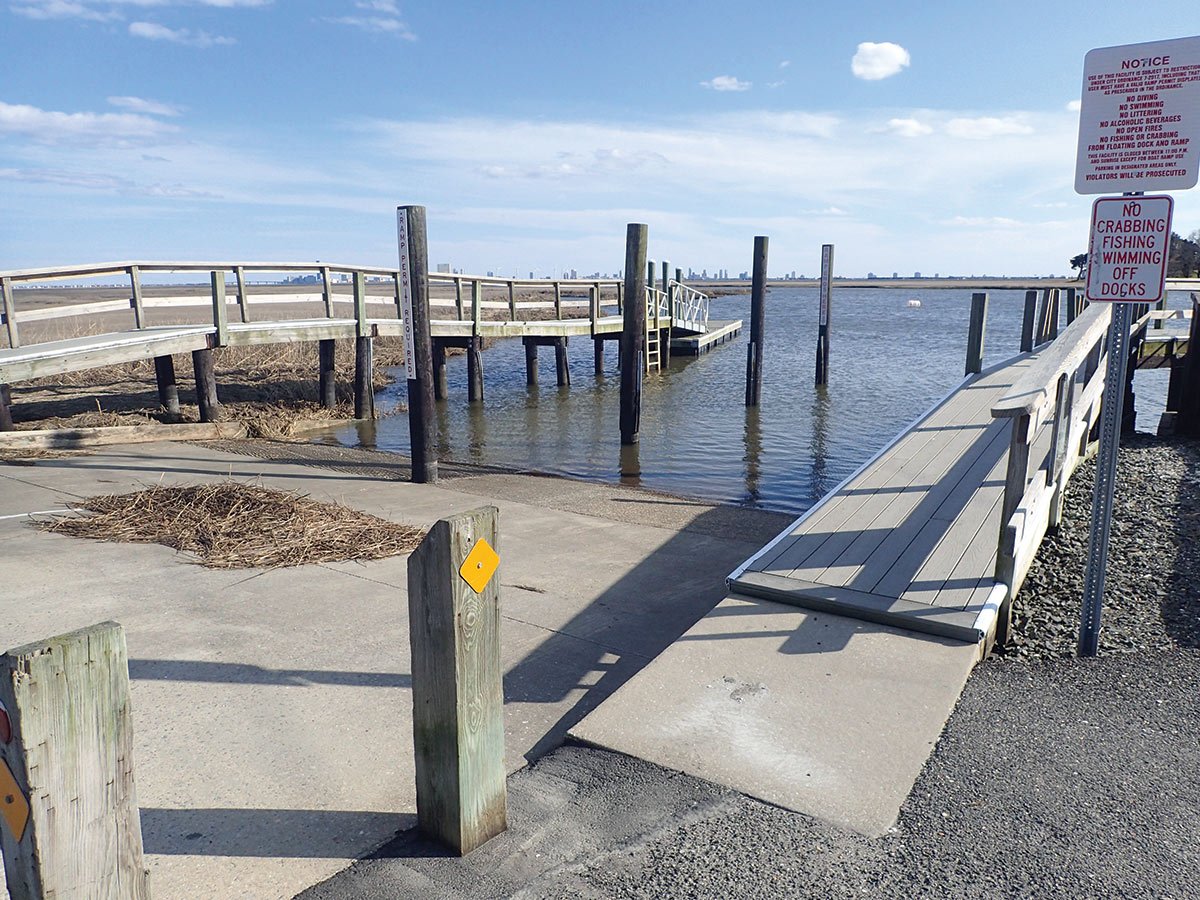
Prepare now to be in the bite whenever and wherever it occurs.
As a fisherman who trailers his boat, I try to stay ready to hit the highway wherever that hot bite develops. Knowing everything about each ramp helps remove question marks and provide quicker and greater access to the action. Scouting ramps, when actually not intending to fish, can help captains understand and prepare them for which ramps fulfill their individual boating needs.
Each ramp has its own advantages and limitations, and many ramps simply don’t have enough water at low tide for modestly-sized vessels. Add a blowout wind or full moon tide and captains can’t always launch or get back on the trailer. This can be frustrating to say the least. If anglers plan to use a ramp such as these, they must plan their trip around the tides and when there is enough water to load or unload.
Conversely, some ramps have an extremely gradual pitch and an extremely high tide can cause problems for the vehicle. One must back their truck through the saltwater in order to sink the trailer far enough to deploy or reload. Saltwater rusts your automotive investment and destroys brake lines. Many of these ramps exist up and down the coast so if anglers are aware they can plan to depart and return mid-tide. Speaking of pitch, some ramps have a steep incline that can send tires spinning, especially at low tide when the pavement is slick. Four wheel drive can save the day at these places.
Dock space is also important as some have room for a dozen boats to tie off while others leave a lot to be desired. If a line of boats is launching, and a ramp dock is rather small, it can create headaches.
It’s paramount to find out what hours a ramp is open. I’ve shown up at ramps that I’ve never used before and had no problems, but I’ve also arrived at fresh launch spots only to see gates or chains stopping me from getting on the water until the ramp opened. Miss the early bite on some species and the day becomes a bust. If a ramp is open to the public and requires tokens, I’ll buy enough for the entire season to avoid the lines.
As the sun sets, many ramps have a closing time that boaters are required to be out by. This can be problematic if the fishing is excellent. But if you know you have to be home for a special dinner with your spouse, it really doesn’t matter does it? Knowledge drives decisions.
All ramps, public or private, have different parking parameters. Some ramps are wonderfully set up, but there’s very little parking, while other launches have more than enough parking spaces. Still others provide a shuttle from the trailer parking to back to the waiting boat. It’s essential to understand all parking situations. I was once ticketed for parking my vehicle in the wrong direction.
I recall another time that a fisherman had his girlfriend stand in a parking spot in order to hold it while he was in the launch line waiting. The vehicles ahead of him that launched wanted to park there since no more spots remained open. The lady stood strong and the other guys were forced to park a mile away in residential neighborhoods. Finally, a driver nudged his truck into the spot and contacted the girl. A fight almost ensued and law enforcement were called in. Don’t be the guy to hold a spot or the one to idle into the rude person holding it; avoid the drama, arrive early.
On a non-fishing day, I prefer to drive to the ramp and check it out, talk to the closest tackle shop and analyze the ramp’s ability to work for me. I also get to see if there are restrooms, fish cleaning stations or any other onsite amenities. I’ll take a note of how long it takes me to get there and then add the appropriate amount knowing I drive slower with a boat in tow.
Often my recon missions include stops at multiple tackle shops I’ve never visited in which I’ve read reports from in The Fisherman. And if my wife or a buddy is accompanying me, somehow lunch or dinner usually tops off the trip! My ramp scouting often turns into a nice outing!
Most states have online ramp guides that can help you lay out which ramps to scout. Sometimes those resources mention what each ramp charges for use, with fees ranging from free to $25 or more.



